24 Social Media Marketing Tips To Level-Up Your Brand

Ready for a few social media tips that can help you level up your own strategy and build your brand reputation online?
Social media has become one of the most important digital marketing channels of our time.
In this post, we share key social media marketing tips that’ll help get you started, fortify your social media marketing strategy and optimize everything along the way.
Proven social media tips to enhance your marketing strategy
We’ve broken these tips up into a few different sections:
- Tips for before you post – For before you start posting to social media or decide to get your marketing strategy back on track.
- Tips on getting started – For when you finally start posting content to social media.
- Tips for fine-tuning your social media marketing strategy – For when you start posting to social media regularly but still need help developing a strategy.
- Tips for social media optimization – Tips on how to make your strategy and posts a little better.
Tips for before you post
1. Define your goals with social media
Know exactly why you want to use social media before you start posting.
Yes, social media has become a vital marketing channel, but what exactly are you looking to get out of it?
Do you want to raise brand awareness? Grow your audience beyond your blog and email list? Acquire more leads and sales?
Think of how your brand specifically would benefit from social media marketing, and arrange those benefits from most to least influential to the overall success of your brand.
Keep those goals in mind as you plan your social media content calendar and develop your social media strategy.
2. Research your target audience on social media
Your target audience (consumers who are most likely to be interested in the niche you develop products and services for) is on social media somewhere in the world wide web.
If you haven’t created your social media accounts, yet, find them before you do.
Even if you have created social media accounts already, knowing which social media apps your target audience is active on is vital to your success.
Once you find your target audience, research the influencers they follow in your niche as well. Their metrics will give you an idea of the sort of engagement levels you can expect to achieve with this target audience.
3. Choose your social media platforms carefully
Publishing good content to social media regularly isn’t easy.
Sure, there are social media automation tools that can help keep your social media calendar full of engaging posts to publish. Some even share your latest blog posts to social media automatically.
However, those who are successful on social media publish more than just run-of-the-mill marketing messages, images and links to articles.
It’s important that you choose the social media platforms you publish to carefully for this reason.
In general, you can’t go wrong with popular social networks such as these:
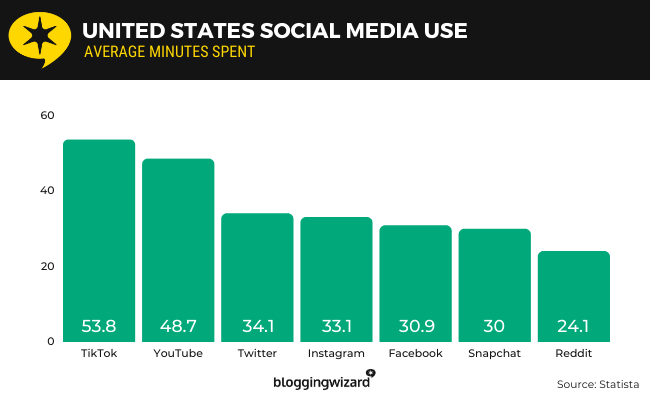
But your goals need to align with the content you create for social. That means you need to consider the main uses of each social network.
For example, Instagram is great for both entertaining content and product-centric content:
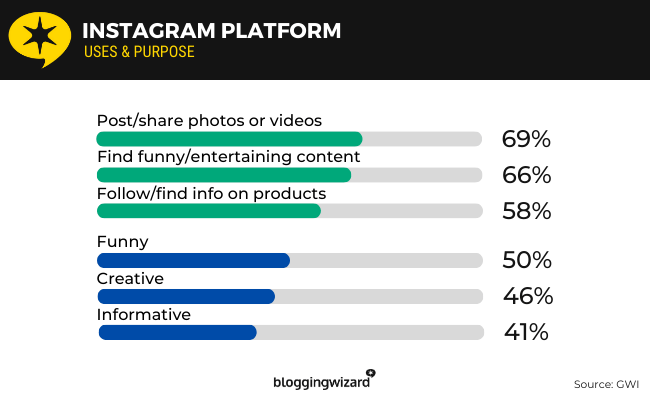
Our post on how much time people spend on social media goes into more depth about the reasons people spend time on specific social networks.
So, research your target audience, and focus on platforms they’re most active on.
4. Determine the best time and days to post

This one can also be a later tip, but we’re putting it here because it’s something you may be able to figure out before you start posting.
The truth is, humans are creatures of habit. Most of us have the same schedules every day, and that means we likely browse social media at the same time every day.
We’re also likely more active on social media on certain days of the week. And that can vary depending on the platform.
For example, after analyzing several studies, the best times to post on Facebook are 7AM to 3PM Monday-Thursday and 5PM to 1AM from Friday to Sunday.
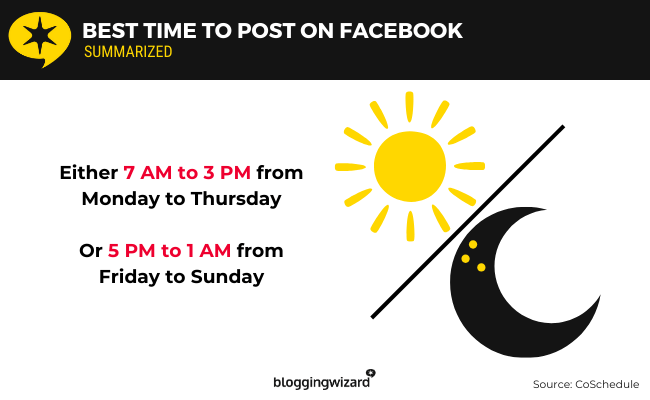
Whereas, on Instagram, Saturday and Sunday appear to be the best days. And around 8PM most days is where engagement tends to peak.

Once you start publishing to social media yourself, you can run your own tests to determine the optimal times for you to post.
5. Learn the art of visual content
Some of the most popular social media platforms in the world are entirely based on visual content. This includes Instagram, TikTok and YouTube.
Your posts on Facebook and Twitter (now X) may even perform better if they include photos or videos.
Your best bet is to learn and understand the art of visual content.
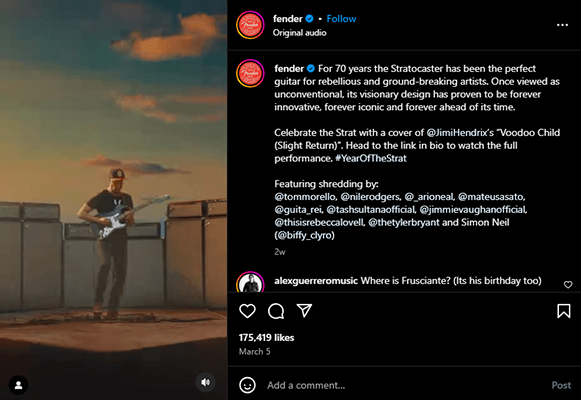
Browse social media as you normally would, but pay attention to graphic designs and editing styles influential brands and figures use.
Pay special attention to what catches your eye. Chances are the same aspect of an image or video captured someone else’s eyes as well.
Make note of techniques that stand out to you, and incorporate them into your own content.
Tips for getting started
6. Humanize your brand
In this day and age, consumers want to shop with brands they know and trust more than ever.
You can develop a successful social media strategy by simply adding a more personal, human element to your content.
Choose one or a few employees (you can also do this yourself) and have them actually speak to the camera in videos and appear in images uploaded to social media.
When you market your brand, use a friendly and casual tone, as if you were sending a video to a friend. Just be sure to keep things professional as well.
When you hire a social media marketing manager, pay attention to their personality in interviews. Focus on candidates whose personalities you feel would match your audience best.
7. Understand the differences of each of your chosen social media platforms
A common mistake new marketers make is uploading the same content across all social media channels.
While this strategy is certainly better than not uploading anything at all, it’s not going to help your brand succeed in the long term.
If you want to become an effective social media marketer, learn about the differences of each platform you publish to.
Start by learning each platform’s upload requirements. Each platform has recommended image and video specifications you should follow.
More importantly, each platform has different content that works on that platform.
For instance, YouTube is great for long videos while Instagram and TikTok do better with shorter videos.
Again, browse each platform you publish to, and make note of the types of content that perform best on each.
Note: If you can cross promote content to other social networks, it’s well worth doing. You’ve created the content already so it won’t take much extra time. For example, YouTube may be best for long-form videos but short-form videos can work there too. Any opportunity for content repurposing is worthwhile.
8. Choose a storytelling tone over a marketing tone
We touched base on this in Tip #6, but it’s important, so let’s talk about it again.
As we discovered in our post on social media stats, internet users visit social media to keep in touch with friends and family, follow celebrities and artists, and watch entertaining content.
They’re not there to be marketed to, but they’re willing to be.
To put it simply, they know you want them to buy. Your job is to show them why they should.
When you create content that markets your brand, your products or your services, use a storytelling brand voice rather than a marketing one.
Big name brands can afford to spend millions on ads that are designed to raise brand awareness through funny commercials.
With a smaller budget and less influence, you’re much better off creating simpler, more casual content that demonstrates how your products and services would benefit your customer.
9. Include targeted content in your social media calendar
Finding your target audience can help you develop a more concrete social media calendar.
It’ll give you a focus group to research, which will uncover topics your target audience is interested in and problems they’re having in your niche.
This should give you plenty of topic ideas to work with so you can fill your social media calendar with topics that aren’t necessarily linked to your brand.
To uncover those topics, research your niche on social media, and pay attention to topics that receive the most metrics.
You can also pay attention to what your target audience says in comment sections and forums across the web.
10. Include videos in your social media calendar
In our post on content marketing stats, we discovered that the majority of marketers, which was 45% of those surveyed, say that video content performs best.

Therefore, it’s important that you incorporate video content in your social media marketing plan.
Here are different types of video content you can publish to social media:
- Instagram
- Reels
- Stories
- Video posts
- Facebook
- Reels
- Video posts
- TikTok
- Videos
- YouTube
- Videos
- Shorts
- Twitter
- Video posts
Video content doesn’t need to be complicated, either, especially if you focus on a more casual tone.
You can simply focus on short-form videos captured on a decent smartphone.
11. Use polls and ask questions to increase engagement
Your social media calendar should include quite a few posts that encourage your audience to engage.
The more your audience engages with your entertaining content, the more likely they’ll be to engage with your marketing content.
Many social platforms have polls you can create, including Twitter and Facebook. You can also post them to Instagram stories and YouTube’s community section on your channel.
You can also ask your audience a simple question to answer.
Social media contests work great as well as do quizzes. You can create both easily with social media giveaway tools and online quiz makers.
12. Use content creation tools optimized for social media
If you’re a small business, you might find it difficult to include marketing tasks in the day-to-day operation of your business.
If this is the case, check out a few content creation tools that are optimized for social media.
Canva’s a great one to use for social media marketing, but there are plenty of alternatives to Canva out there.
There are also social media scheduling tools that integrate with content creation tools. For example, SocialBee integrates with Canva and Unsplash to make creating social media content to publish much easier.
13. Research hashtags to use
Social media platforms don’t have proper categories in the way an app like Netflix has. We mostly rely on the algorithm to show us what we want.
However, we can search for hashtags to see recent posts that include particular hashtags. We can also follow specific hashtags.
Using the right hashtags lets your audience find your content much easier. They can even provide context to the algorithm in regards to what your post is about.
Research your top competitors and see what hashtags they use.
You can also use hashtag tools like RiteTag and Hashtagify.
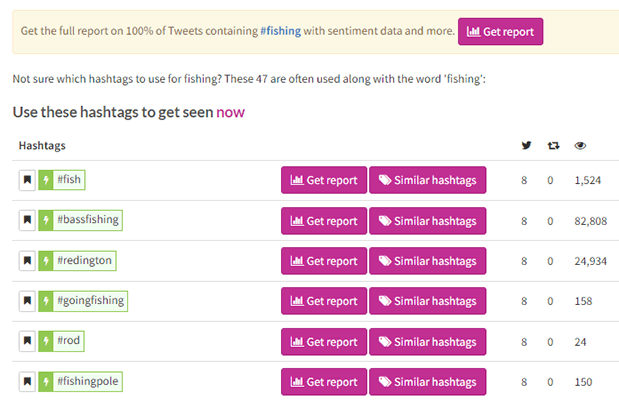
Tips for fine-tuning your social media marketing strategy
14. Maintain your social media channels daily
You don’t need to necessarily publish to social media every day, but you should at least maintain each social media channel you operate on a daily basis.
This includes responding to comments and direct messages (DM) and keeping track of social media posts that include your name and products.
You should also stay on top of violations, such as strikes against community guidelines that may be false as you’ll need to appeal these manually.
15. Use social media marketing tools
This is another important tip. Maintaining your social media marketing strategy can be difficult. Fortunately, there are plenty of tools that make it much easier to do.
First, there are tools for social media scheduling. They allow you to schedule social media posts in advance.
Some even allow you to create social media posts for multiple platforms by creating a single draft.
There are also tools for social media management, which allow you to manage your social media inbox, publishing schedule and performance from a single dashboard.
16. Experiment with different types of content and content formats
Social media content comes in all shapes and sizes.
There’s text-based content, video-based content and image-based content. You can even use video content to create audio content on social media.
There are also different types of content: vlogs, product reviews, livestreams, tutorials, quick tips, etc.
Certain types of content work better for some audiences than others.
Plus, it can be easy to get stuck making the same type of content over and over again as it’s familiar and efficient. Don’t be afraid to experiment with different types of content or tackle other content formats you’re not familiar with.
If you need help, check out our post on examples of social media content.
17. Use influencer marketing
According to a statistic in our post on influencer marketing stats, 83% of marketers believe influencer marketing to be an effective social media marketing strategy.
Influencer marketing is the practice of collaborating with influencers in an effort to raise awareness for your brand in a quicker, much more efficient way.
You’ll have to compensate the influencers you work with, but it’s well worth the cost and can be much more effective than advertising alone.
There are tools you can use to find influencers, but your research of your niche on social media should have uncovered a few possible contenders.
Check out our beginner-friendly guide on influencer marketing for more information in this strategy.
18. Don’t try to cover up or hide your mistakes
Social media is not just a place for you to raise awareness for your brand. It’s also a place for you to maintain your brand’s public persona.
When you upload content to social media on behalf of your brand, you must become much more public, which also means you open yourself up to public scrutiny.
If you do find yourself in hot water, own up to it on social media, even if you can’t disclose everything.
It’s much better to face problems head on than to upload as you normally would.
Tips for social media optimization
19. Be consistent
As you find a content format, types of content, a publishing schedule and a social media management method that works for you, keep it up!
One of the most important aspects of a successful social media marketing schedule is consistency.
Consistency keeps your brand and products relevant in the algorithm.
It also helps you meet your target audience’s expectations of when to expect new content from you and what types of content to expect.
Consistency also helps you maintain efficiency in terms of managing your social media marketing strategy.
20. Monitor your brand on social media
Sometimes consumers talk about brands on social media but don’t “@” them, meaning they don’t tag them in posts even though they or their products are clearly mentioned.
This is something social media monitoring tools can help you with. Along with allowing you to maintain comments and DMs, these tools also have a feature called “social listening.”
Social listening allows you to keep track of brand mentions across multiple platforms.
If your customer base has complaints, thoughts and opinions, social listening can help keep you in the loop.
21. Respond to comments and DMs
This is where social media inbox tools come into play.
Your audience is going to comment on your posts and share genuine inquiries through DMs, which you should respond to as soon as it’s convenient for you.
You could visit each individual social media platform you maintain and respond to each comment and DM one by one.
Or you can use a social media inbox tool.
These tools allow you to maintain comments and DMs across multiple social media platforms from a single dashboard.
When you respond to your audience online, maintain a friendly yet professional tone.
22. A/B test marketing messages
If you’ve created a piece of content that’s performing pretty well but could be better, consider altering it ever so slightly and republishing.
This is a form of A/B testing.
A/B testing, also known as split testing, involves testing two or more variants against one another.
For instance, you could upload a promotional image for your product to Instagram, let it collect metrics for a week, then upload the same type of image of your product with a different backdrop/setting.
Use the same caption and posting time, though so that only the backdrops are tested against one another.
Wait another week, then upload the first picture again but with a different caption.
You can run any type of tests you want to optimize content you’ve already created but could perform better.
23. Analyze everything
As you get into a comfortable groove with your social media schedule, you can start maintaining a record of your metrics and optimize as you go.
Monitor these key performance indicators (KPIs):
- Impressions
- Video views
- Likes
- Comments
- Shares
- Post reach
- Follower count
- Follower growth
- Facebook reactions
- Saves
It may take a few extra steps, but you can also keep track of your click-through rate, average engagement rate, conversion rate and cost per click.
Fortunately, many social media management tools have social media analytics tools built in.
24. Learn to adapt to platform changes
This is the final tip we’re going to share with you.
Algorithm and platform changes are inevitable. Lawsuits, new regulations and consumer expectations all work together to keep social media platforms in check.
When platforms change their algorithms, you’ll lose or maintain views and subscribers. This is normal. Just maintain your publishing schedule until the algorithm settles itself.
Platform changes happen as well. The developers of a particular platform may remove or change a feature or an entire platform may get shut down or blocked by federal regulations.
All you need to do is adapt as necessary and establish yourself on more than one platform.
If you lose access or influence on one, you can always rely on the other.
Final thoughts
That concludes our list of social media marketing tips. Let’s recap some of the most important ones.
For starters, it’s important that you research your target audience and find out where they’re most active on social media.
Focus on those social media platforms to start out with.
Create targeted content for your audience, and use a friendly, conversational tone rather than a stiff marketing tone consumers are used to seeing from brands.
You can create image and text-based content, but you should incorporate video-based content at some point in your social media marketing journey.
Lastly, you should optimize your social media marketing strategy in multiple ways.
Use social media scheduling tools, social media management tools to monitor comments and brand mentions, run A/B tests, and keep track of KPIs.
If you need additional tips, check out our post on building your social media presence.
